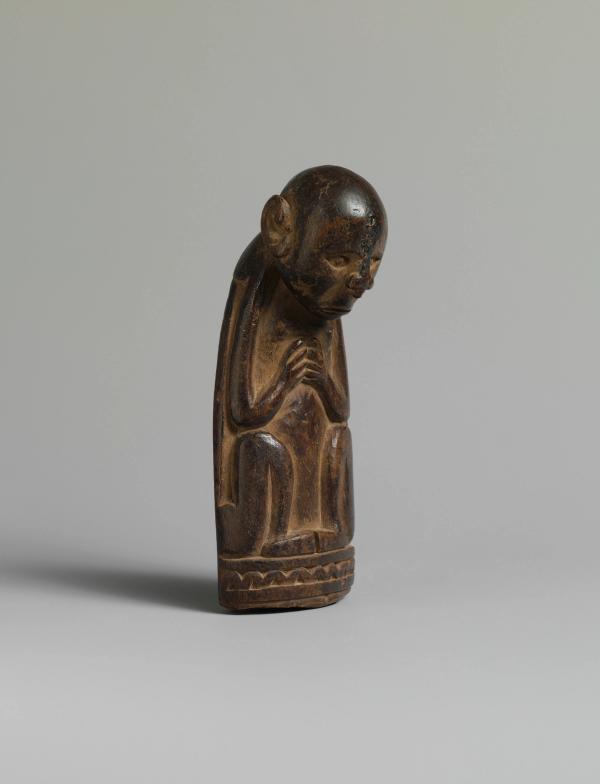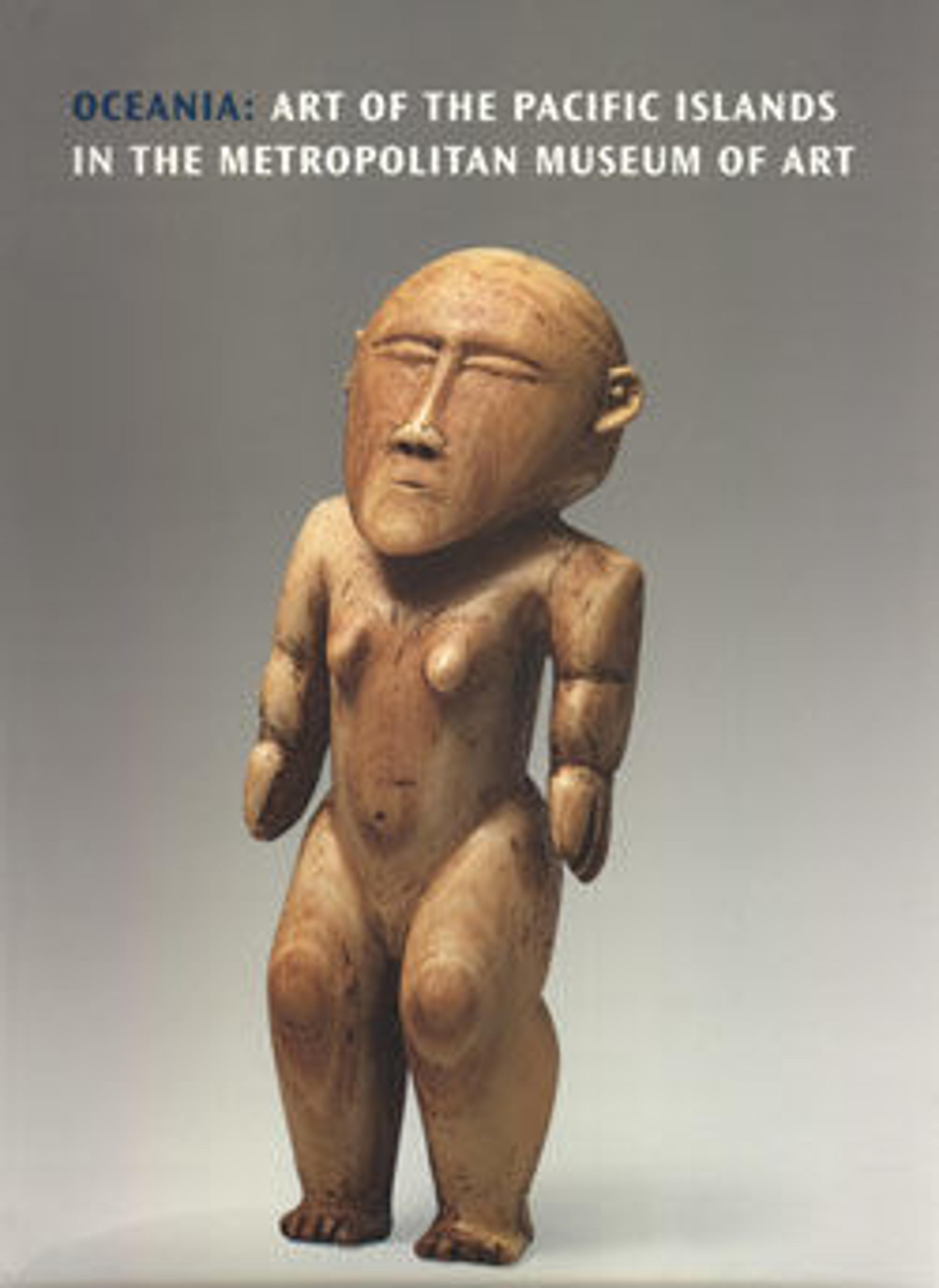Finial of a Ritual Staff or Lime Spatula
Artwork Details
- Title: Finial of a Ritual Staff or Lime Spatula
- Date: 19th–early 20th century
- Geography: Papua New Guinea, Massim region
- Culture: Massim region
- Medium: Wood
- Dimensions: H. 5 1/8 in. × W. 2 in. × D. 1 7/8 in. (13 × 5.1 × 4.8 cm)
- Classification: Wood-Sculpture
- Credit Line: The Michael C. Rockefeller Memorial Collection, Purchase, Nelson A. Rockefeller Gift, 1966
- Object Number: 1978.412.1503
- Curatorial Department: The Michael C. Rockefeller Wing
Audio

1782. Lime spatula finial, Massim artist
Martin Monumwetola
MARTIN MONUMWETOLA: In my time, I normally see my father and my elder uncles use this, and they use that for the gardening purposes. They made the chant over the object and buried the object in the soil.
My name is Martin Monumwetola.
KATERINA TEAIWA (NARRATOR): He is an elder from Kiriwina, in the Trobriand Islands, where this figure is from.
MARTIN MONUMWETOLA: In Kiriwina language, it’s called towosi. It’s a magician, gardening magician.
KATERINA TEAIWA: According to Martin Monumwetola, the chants or spells recited over these objects had to do with the magic of abundance.
Because of their magical properties, figures like these were also once used inside yam houses, where the best and largest yams were displayed. Yams were and continue to be central to Kiriwina culture, both spiritually and symbolically.
At the bottom of this figure, you’ll see a zig-zag pattern.
MARTIN MONUMWETOLA: And the design, that’s the dog’s tooth design. In Kiriwina, it’s called […].
KATERINA TEAIWA: For Martin, this carving is a reminder of the knowledge held by his elders.
MARTIN MONUMWETOLA: Because the old people is the storage of the oral traditions of any tribe and clan. That’s why that object is a very important object. It represents old people.
More Artwork
Research Resources
The Met provides unparalleled resources for research and welcomes an international community of students and scholars. The Met's Open Access API is where creators and researchers can connect to the The Met collection. Open Access data and public domain images are available for unrestricted commercial and noncommercial use without permission or fee.
To request images under copyright and other restrictions, please use this Image Request form.
Feedback
We continue to research and examine historical and cultural context for objects in The Met collection. If you have comments or questions about this object record, please contact us using the form below. The Museum looks forward to receiving your comments.
